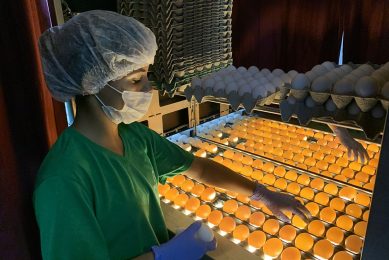NCC refutes distorted resistance data claims

The National Chicken Council in the US has responded to a report from the Environmental Working Group (EWG) that used selective and incomplete 2011 government data on retail meat samples, to claim that antibiotic use in chickens and other food animals is the primary cause for people developing antibiotic-resistant bacteria.
The US Food and Drug Administration (FDA) regulates medicines given to food animals. When FDA approves an antibiotic, it bases that approval on extensive research which must show that its use in animals does not pose a significant risk to human health.
For approved antibiotics, FDA and the US Department of Agriculture (USDA) have extensive monitoring and testing programs to make sure that food at the grocery store does not contain antibiotic residues.
In addition, USDA and FDA run the National Antimicrobial Resistance Monitoring System (NARMS) to monitor resistance trends in certain bacteria in humans, animals and retail meats. NARMS data provides an important baseline of knowledge when trends are taken into account.
“If you look at the complete picture, the 2000 to 2010 data from NARMS show a very low incidence of pathogenic bacteria on meat and stable to declining rates of those bacteria that are resistant to antibiotics,” said Ashley Peterson, Ph.D., NCC vice president of scientific and regulatory affairs. “Between 1999 and 2010, in over 23,000 human isolates tested, the percentage of Salmonella isolates where no resistance to any antibiotic was found increased from 74% to 85%.”
What EWG also failed to mention, Peterson said, is that the NARMS data show that multi-drug resistant Salmonella from retail chicken is on the decline.
Food safety standards are applied to all chicken products produced in the United States, and these products must meet or exceed these safety standards set forth by USDA in order to reach American consumers. The latest data show that chicken products test well below the USDA performance standard for Salmonella, for example, in raw chicken products.
The judicious use of antibiotics, with veterinary oversight, can be used to prevent or control disease in chickens. Ionophores, not antibiotics, make up the vast majority of the medicine used in this regard to keep chickens healthy and prevent dangerous microorganisms from forming in a bird’s intestinal tract. Ionophores are not used in human medicine; therefore their use has zero effect on the development of antibiotic resistance in humans.
Antibiotics can also be used when birds get sick – just like humans. At which time, a veterinarian would make the decision about which antibiotic to use, what dosage to administer and what the correct withdrawal time for the medicine should be.
“NCC and many in the medical, veterinary and agricultural fields, question any substantive link or scientific basis between veterinary use of antibiotics and antibiotic resistance in humans,” Peterson added.
“All raw agricultural products – whether produce, fruit, meat, or poultry – could contain bacteria that might make someone sick,” she concluded. “The bottom line for consumers is that all chicken is safe to consume when properly handled and cooked. That is why it is always important to consistently follow safe food handling and cooking practices.”













